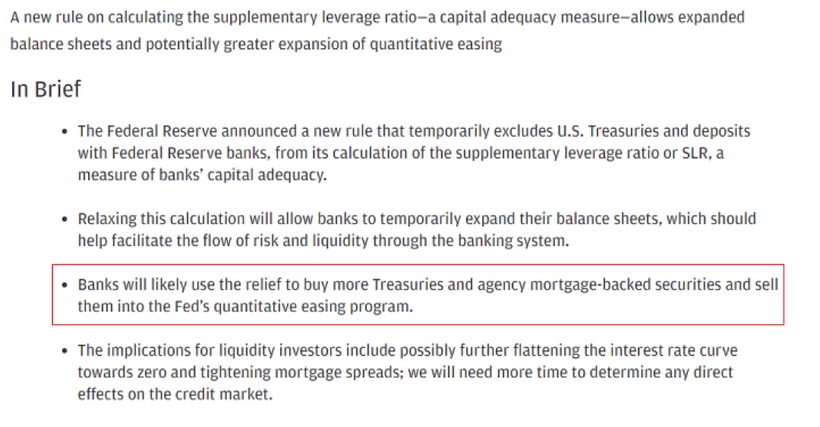
Conversions between carbohydrates and lactic acid play an important role in life. It is the basis of the cycles that operate in mitochondria. At the end of the 1910s Otto Meyerhof mapped these conversions by measuring heat trends and oxygen consumption in frog muscles. When the muscle is working, lactic acid is formed from carbohydrates, and Otto Meyerhof showed that during recovery, this is followed partly by the oxidation of lactic acid and partly by reprocessing of lactic acid to carbohydrates.
The Embden–Meyerhof–Parnas (EMP) pathway allows the metabolic use of glucose to generate ATP, NADH, and several biosynthetic precursors such as 3-phosphoglycerate or pyruvate.
Most of the metabolic energy derived from glucose comes from the entry of pyruvate into the citric acid cycle and oxidative phosphorylation. These pathways occur under aerobic conditions. Under anaerobic conditions, pyruvate can be converted to lactate in muscle or ethanol in yeast.Among the important findings determined as part of the elucidation of the glycolytic pathway were:The finding by Hans Buchner and Eduard Buchner that fermentation, the conversion of sucrose to ethanol, could occur in the absence of a living cell.
The finding of a hexose bi-phosphate intermediate (fructose 1-6 biphos) in glycolysis
The activities required for the reactions to occur were composed of a heat-labile, non-dialyzable substance (enzymes) and a heat-stable, dialyzable substance (coenzymes).
Many scientists, including Gustav Embden, Otto Meyerhof, Carl Neuberg, Jacob Parnas, Otto Warburg, Gerty Cori, and Carl Cori, contributed to the complete determination of the pathway.
Glycolysis is formally known as the Embden-Meyerhof-Parnas Pathway.
Glycolysis takes place in the cytoplasm of the cell. The goal of the initial reactions of glycolysis is to convert glucose into fructose 1,6-bisphosphate. This traps glucose in the cell as glucose 6-phosphate and forms a phosphorylated compound (fructose 1,6- bisphosphate) that can be cleaved into phosphorylated 3-carbon intermediates – DHAP & 3PGALD. These 3-carbon units can then be used to generate ATP by substrate level phosphorylation and by making pyruvate & NADH for the citric acid cycle and oxidative phosphorylation.The first step in glycolysis is the phosphorylation of glucose by ATP to form glucose 6-phosphate. This reaction, catalyzed by the enzyme hexokinase, traps glucose in the cell. This glucose was made by the action of sunlight on carbon dioxide and water via photosynthesis. Our cells have to recapture the glucose so mitochondria can then strip it apart to create CO2 and water to reverse the process of photosynthesis.
What he did not know was that lactic acid concentrations vary with the free radical pulse rate of mitochondria and with the oxidation state of iron in the cytochromes of mitochondrial respiratory proteins.
Meyerhoff won a Nobel Prize for medicine in 1922 for a partial discovery of how a pathway operates related to lactic acid metabolism. Even today the real actions of this pathway remain unknown because the biophysics of the pathway has not been studied properly.
Sunlight is a small part (visible spectrum) of the electromagnetic spectrum when one looks at it top-down. Photons and electrons make up this spectrum and their energies are the differences within the spectrum. What they both are made from, however, is identical from a subatomic perspective. Sunlight splits water into hydrogen, oxygen, and 4 electrons at a basic level. Hydrogen from water is a proton. Electrons are liberated from both atoms that make up water (I laid this out in the photosynthesis blogs at jackkruse.com). This water is used to grow all aspects of our food supply on planet Earth. Not one food breaks this rule unless man makes it.
This means our food contains information about the electromagnetic spectrum in both photon and electron and proton messages. I told you all food is broken down into electrons in our mitochondria. What I have not mentioned a lot is that long-chain fatty acids crafted from food metabolism provide our mitochondria with protons too. Protons are ripped from foods by mitochondrial dehydrogenase. The protons mitochondrial strip from foods is all protium and not deuterium. This allows the matrix to remain gel like and piezoelectric. When it is squeezed the electric charge in the mitochondrial membranes is harvest like juice is when an orange is squeezed (see my latest Quantum Health TV video for more).
Protons carry a positive charge and electrons carry a negative charge. The electromagnetic force acts with infinite power and range on all CHARGED particles in the universe. This includes your quantum cell and especially your mitochondria. This means they are under the strict control of the electromagnetic force, as electrons (NADH) are from food. These electrons enable us to electronically induce molecular changes in proteins and in our electron transport chain in mitochondria to electrify the hormone cascade in the hypothalamic-pituitary axis when sunlight enters the eye.
Nature is based on probability and not cause and effect. Why?
These electron and proton paths can and should be thought of as possible fates, or even quantum superposition to deal with multiple possible realities food faces in our mitochondria processing plant; their ultimate fates are controlled by the electromagnetic force to perform different actions within the electron transport chain.
The electromagnetic force changes as seasons change as the Earth moves around the sun. Sunlight is the lever that varies the squeeze on our colony of mitochondrial to liberate its current or redox potential. This DC current powers the energies of electrons in foods up or down depending upon the season the food grows in. It turns out this is precisely how insulin evolved and is regulated in our mitochondria by the current it releases in beta cells of the pancreas. It is tied to “where” electrons and protons are being fed into the chain. When electromagnetic energies in the environment are altered, we appear to harbor two basic possible mechanistic states that the electron transport chain can choose between based on the two states we face.
No food and a subsequent lack of electrons and increased protons from fat storage,
or an excess of food, with the result of too many electrons or too much energy from photons and a lot of protons.
Therefore the electron transport chain has to have a built-in mechanism to deal with both situations. This is just like a simple circuit being controlled on a laptop semiconductor chip. When we starve, we have poor electron flow or current, and very few electrons enter cytochrome 1. Insulin’s action would be low during this time because the superoxide pulse is linked to actions of this cyctochrome.
In the mitochondria at complex 1, when the current is low, we deliver plenty of endogenous electrons from FFA to flow through the FADH2 input at cytochrome 2. This happens through the action of an electron transporting flavoprotein dehydrogenase coming from the first step of beta-oxidation of real fats from our fat stores. For example, this could be a fatty acid like palmitic acid.
When food is sparse in winter, the current of flow is low, and it is near impossible to generate reverse electron flow through complex 1, so activation of insulin signaling is rapidly aborted by the continuing action of tyrosine phosphatase. Tyrosine is an aromatic amino acid that absorbs sunlight and acts as a semiconductor to absorb light and emit an electromagnetic pulse that signals a mitochondrion what to do next. Dr. J. Bose showed us this mechanism in crystals in the 1890s. This resonant mechanism of sunlight yokes insulin action to environmental light signals and temperatures. The photoelectric current signals phosphorylation of pathway proteins to change “where electrons” enter our mitochondria.
I told you years ago food clearly has a quantum electron effect because it contains light energy that is unaccounted for in the glycolytic pathway. Most biochemists and those in the paleosphere fail to realize the effect is tied to the electrons’ energy state and nothing else. Foods grown in longer light cycles have higher energized electrons and they are handled very differently than electrons from low light level foods because of where they enter the electron transport chain in our mitochondria. Our mitochondrial cytochromes are proteins that can decipher the differences in energies, and this why they enter the ETC at different cytochromes and provide different levels of ATP and oxygen generation. Here you can begin to see how the electromagnetic force directly impacts the proteins in the insulin signaling pathway.
What few realize: Diabetics have a dawn phenomenon related to a lack of circadian cycling. A lack of light cannot be fixed by adding a drug . For prediabetes and Type-2 diabetes who regularly monitor their blood sugar, there is a well-known issue called the dawn phenomenon. It is characterized by a rise in blood sugar during the early morning hours, despite lifestyle measures and even medication. Sunlight has massive impacts on many circadian genes that alter mitochondrial biology. Most mitochondria in humans are in the brain, so the effect of sunlight on these genes should pay off handsomely to clinicians who understand the link. The Rev-erb gene is the gene that the electromagnetic force operates on.
A lack of AM sunlight = a lack of electromagnetic force to activate the Rev-erb gene. An altered daily rhythm of expression of the Rev-erb gene underlies the dawn phenomenon. Future investigations to reverse diabetes must be built around light and not drugs to get a full understanding of the disease. Rev-erb is expressed only during the day but not at night. In humans, the rev-erb gene is found in GABA neurons and the gene’s expression is highly enriched in a particular brain area called the suprachiasmatic nucleus. The SCN is mainly composed of GABA neurons. Humans have a photopic retina because they are diurnal. When the body awakes and takes in food, insulin is secreted from the pancreas to signal the body to lower blood sugar. Insulin is more effective in doing this job upon waking than at other times of the day. This high insulin sensitivity is probably because the body is anticipating feeding behaviors upon waking up. Sunlight alters the daily functioning of rev-erb gene in the brain to control insulin release and action in the gut. Neural Rev-erb must be operational to regulate mitochondria in the liver to control the hepatic insulin sensitivity rhythm. This quantum controller operates independently of eating behaviors or basal hepatic glucose production. In humans, we now know the Rev-erb gene in white blood cells, correlates well with the central clock function in the brain.
The nuclear receptors REV-ERB (consisting of REV-ERBα and REV-ERBβ) and retinoic acid receptor-related orphan receptors (RORs; consisting of RORα, RORβ and RORγ) are involved in many physiological processes, including regulation of metabolism, development and immunity as well as the circadian rhythm. What does this imply? It means there is a specific part of the AM solar spectrum diabetics lack. Can you guess which one it is?

Nuclear receptor Rev-erb α: is a heme receptor that coordinates circadian rhythm and metabolism.
For more on that watch the video below.
CITES
https://quantumhealth.tv/programs/quantum-chronicles-episode-3-part-1
Ding, G., Li, X., Hou, X. et al. REV-ERB in GABAergic neurons controls diurnal hepatic insulin sensitivity. Nature (2021). https://doi.org/10.1038/s41586-021-03358-w













